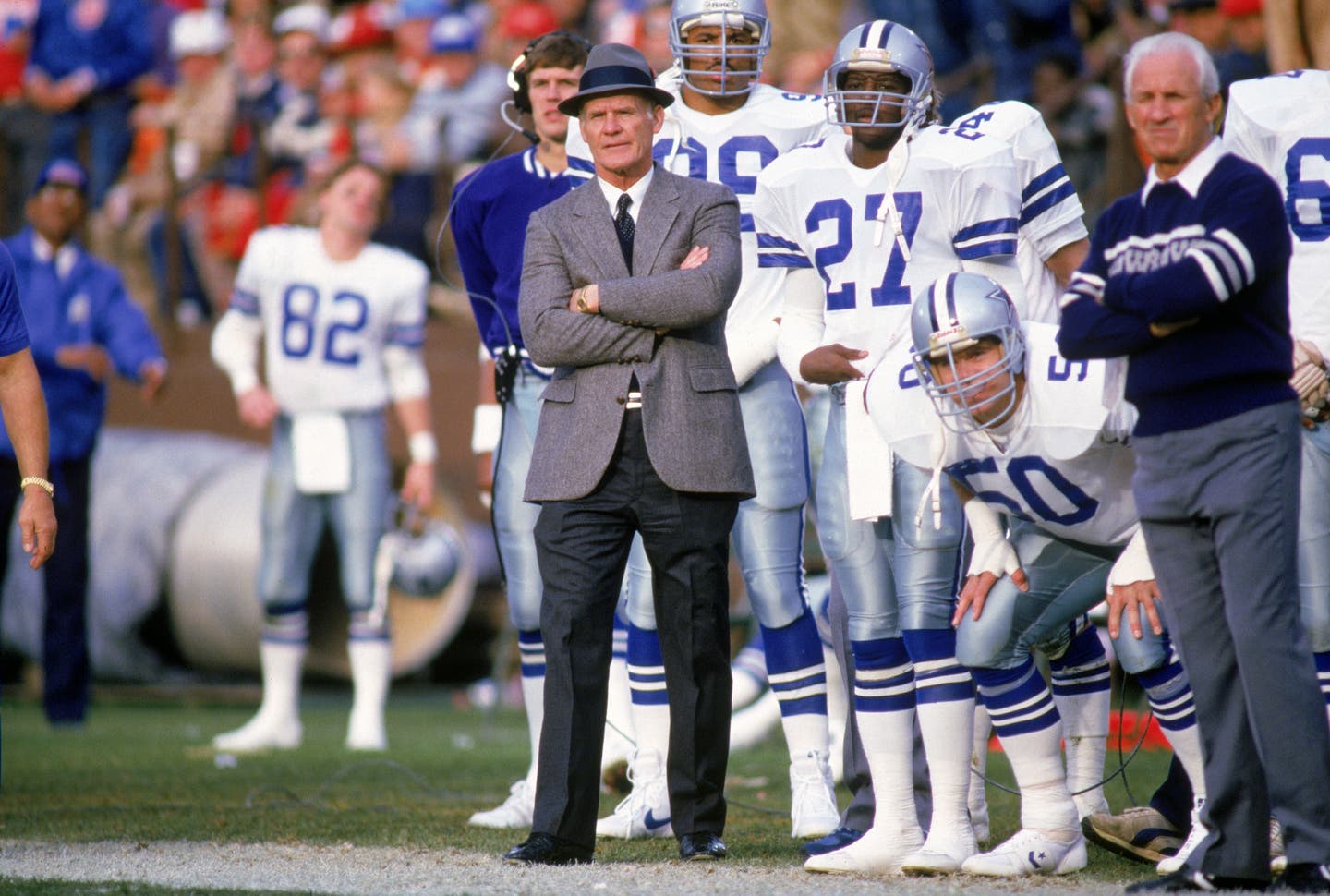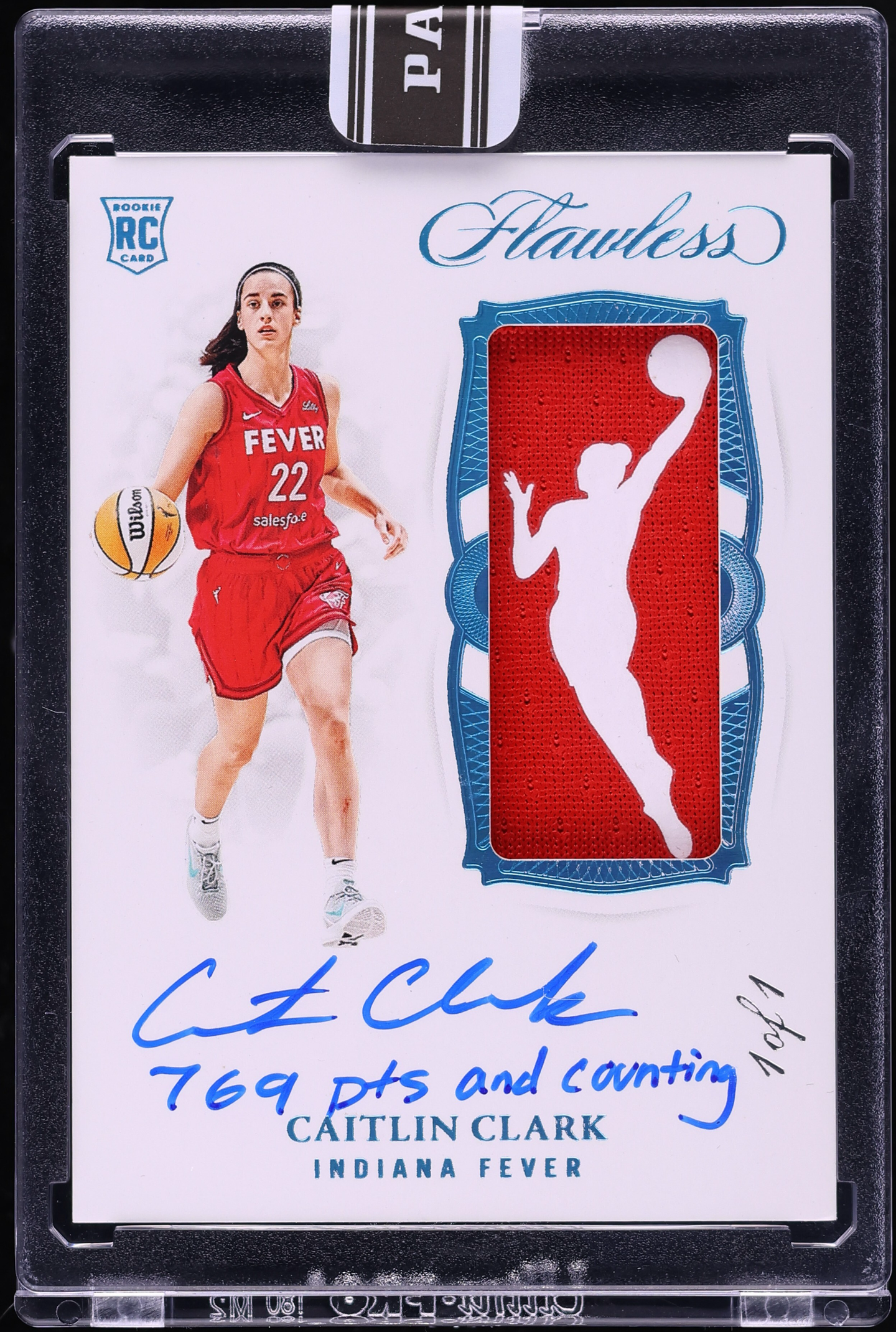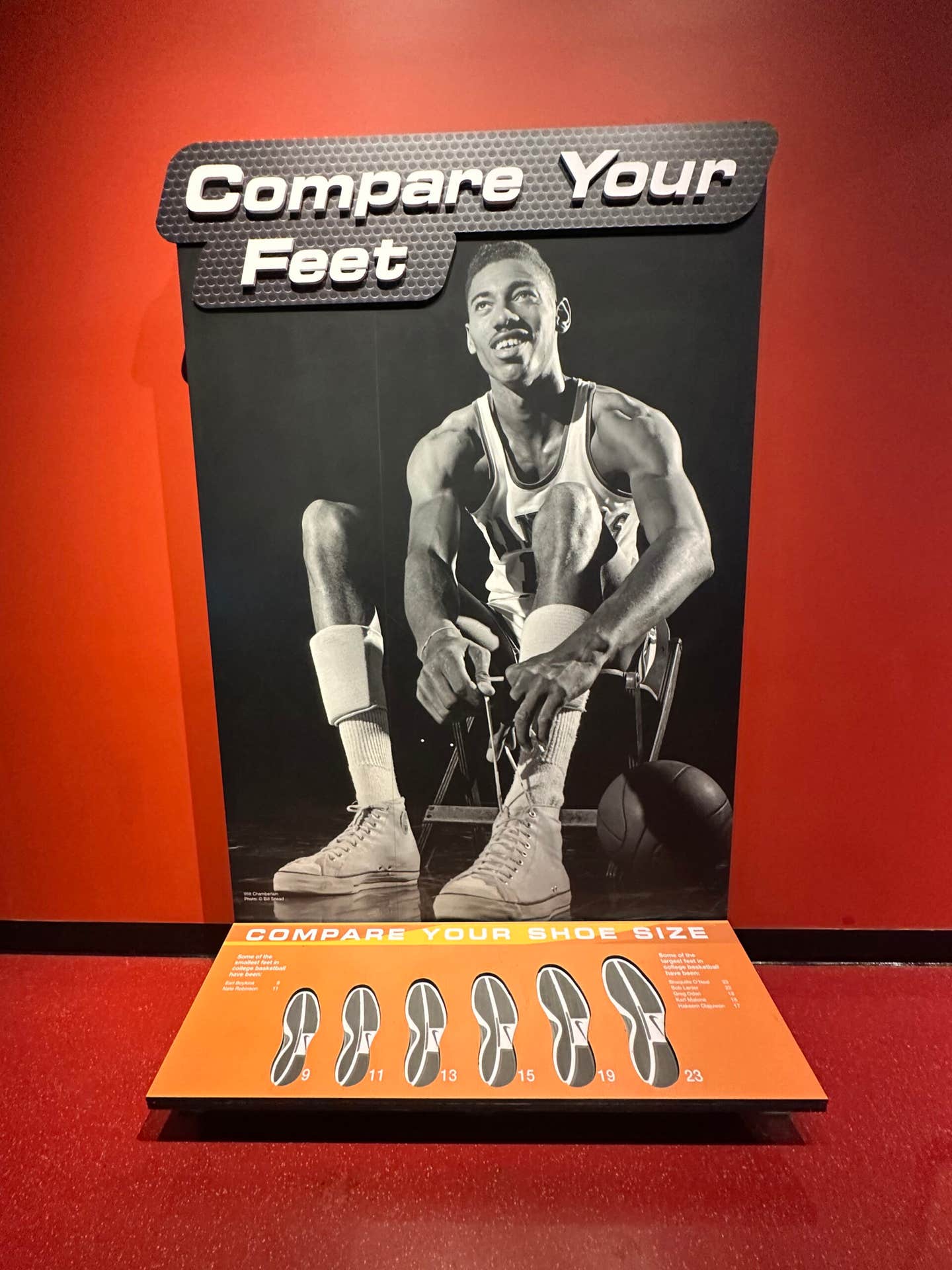
News
Behind legendary head coach Tom Landry, the Dallas Cowboys captivated football fans in the 1960s
Three dollars produced a lifetime of priceless memories for Luke Madole, a Dallas first-grader who couldn't wait to see the Cowboys, which had just joined the NFL.
They were led by Eddie LeBaron, who came out of retirement to quarterback the team, and a future Hall of Fame coach named Tom Landry.
It was an inauspicious start, as the Cowboys posted an 0-11-1 record during their inaugural 1960 campaign and wouldn't have a winning season until 1966 when they faced the Packers in the first of two straight iconic NFL championship games.
But to Madole and his football crazy boyhood friends, the early Cowboys became instant heroes.
“We would go on buses called ‘Cotton Bowl Flyers’ for three dollars — one dollar for the bus to the Cotton Bowl, one dollar for an end zone seat and one dollar for the ride home,” he said. “We didn't win often, but it was great fun. It was an innocent time when three boys only 8 or 9 years old could safely walk a little less than a mile to the bus stop, spend all afternoon at the Cotton Bowl at the State Fairgrounds, get back on the bus and come home, all without the concerns parents of today must have.”
Heritage Auctions has an almost limitless array of Cowboys memorabilia. But one of the most unique items is a program, which cost 50 cents at the time, from the team's first-ever game in Dallas, a preseason contest against the defending NFL champion Baltimore Colts on Aug. 19, 1960. The color cover illustration shows a large action photo of a receiver catching a ball in mid-stride, set against the backdrop of teams in action on the field.
The Cowboys put up a valiant effort in that game, leading most of the way before getting stung by Hall of Fame quarterback Johnny Unitas, whose late 62-yard touchdown pass led the Colts to a 14-10 win.
A description of the souvenir program says, “Tom Landry and his team were far from the America's Team status that they would rise to in the following decade, but in 1960 the Dallas Cowboys started a legacy that would eventually establish them as one of the more recognizable athletic organizations on the planet.”
Those early years hold special meaning for Madole and it's no surprise that one of his all-time favorite players was LeBaron, the starting quarterback for 10 of the team's 12 games during their inaugural season. Rookie Don Meredith and Don Heinrich started the other two.
Dallas obtained LeBaron by trading their 1961 first-round pick (Norm Snead) and sixth-rounder (Joe Krakoski) to the Redskins. LeBaron scored the first touchdown in Cowboys history and set a record for the shortest-ever NFL touchdown pass, a toss from the two-inch line on Oct. 9, 1960 against the Redskins.
The Cowboys didn't reach the .500 plateau until 1965 (7-7), but broke through the following year with a 10-3-1 mark, the first of a league record 20 consecutive winning campaigns under Landry. The team’s 1966 season came to an end on New Year's Day (1967) when Dallas fell, 34-27, to Green Bay in the NFL title game, a contest played at the Cotton Bowl, with the Packers going on to face the AFL champion Kansas City Chiefs in the first-ever Super Bowl.
The combatants squared off again the next year in one of the NFL’s greatest games — the “Ice Bowl” at Lambeau Field, where temperatures in Green Bay hovered around 15 degrees-below-zero. The Packers won, 21-17, on a last-minute touchdown en route to their second straight Super Bowl championship.
Of course, as the Cowboys improved, Madole became a great admirer of many other Dallas stars from the late ’60s and early ’70s, such as Meredith, Don Perkins, Cornell Green, Chuck Howley, Bob Lilly, Walt Garrison, Mel Renfro and the great wide receiver “Bullet Bob” Hayes, who set a world record in the 100-meter dash at the 1964 Summer Olympics in Tokyo. He's the only athlete ever to win both an Olympic Gold Medal and Super Bowl title. In 2009, Hayes was inducted posthumously into the Pro Football Hall of Fame, joining fellow Olympic Gold Medalist Jim Thorpe (1912).
“Hayes was unbelievably fast, but Meredith somehow managed to throw Hayes long bombs without under-throwing him,” Madole said. “I also recall that Cornell Green's All-American basketball background shone through as he could seemingly leap higher than the average cornerback for interceptions and pass blocks. And Bob Lilly and Chuck Howley were monsters on defense.”
A Dallas attorney, Madole had indirect family ties to the Cowboys at one point. The team's original owner was prominent Dallas oilman Clint Murchison Jr., who like many Texas businessmen, ran into financial trouble during the early 1980s.
Madole's uncle, wealthy Texas oilman H.R. “Bum” Bright, was approached by Republic Bank, which had made Cowboys-related loans to Murchison as a potential buyer of the franchise. The sale would help Murchison pay off his bank loans and keep the team in Dallas.
“The NFL at that time had a 'single owner' policy, but Bum insisted there be a group of investors and eventually the NFL yielded,” Madole said. “So my uncle and a group of Dallas investors bought the team (1984, $85 million) more as custodians, got it through the financial headwinds of the savings and loan crisis, and later sold it to Jerry Jones.”
STAR POWER
Jones paid $179 million for the team in 1989. According to Forbes, the Cowboys are now the most valuable sports franchise on the planet, worth $8 billion.
Love ’em or hate ’em, “America's Team” has one of the country's most recognizable and popular sports logos, a large navy blue star outlined in white and blue against a signature silver-colored helmet.
It’s found almost everywhere you go in and around “Big D,” from shopping malls to AT&T Stadium, the Cowboys‘ $1.3 billion home, and their amazing 91-acre world headquarters called The Star in suburban Frisco, which includes a 12,000-seat indoor Ford Center practice and training facility, and Tostitos Championship Plaza.
The adjacent Dallas Cowboys Pro Shop has everything a fan could want in the way of team merchandise, from apparel to collectibles and tailgating gear. Guided tours give guests a behind-the-scenes look at the place where players train and work 355 days per year. In addition to the Ford Center, tours include the Nike Star Walk, Super Bowl Memorabilia & Station and the Grand Atrium and War Room where team officials gather during the annual NFL Draft to decide player selections that could determine the team's fate for years to come.
“The draft room was really impressive,” said long-time fan John Jackson of Austin. “I‘d never seen something like that before. There was an entire wall of monitors that could be used for TV or teleconference. The other cool part of the room was the phone system set-up. With one touch of a button you could be on the phone with another NFL team.”
Jackson grew up rooting for the Cowboys during the late ’80s and enjoyed their second great wave of glory years highlighted by Super Bowl titles in 1992, ’93 and ’95, led by quarterback Troy Aikman, running back Emmitt Smith and one of Jackson's favorite players, fullback Daryl “Moose” Johnston.
“It was a really neat experience to tour and visit The Star,” he said. “It's really top notch. I was especially impressed with the details that went into putting a facility like this together.”
The site previously belonged to Jones, but is now owned by the City of Frisco, a short distance due north of downtown Dallas.
In 2017, the Cowboys unveiled a Ring of Honor Walk at the complex, recognizing 21 players and coaches who made outstanding contributions during the team's history. A monument, in the shape of their uniform number, is dedicated to each legendary Cowboys player accompanied by a list of their accomplishments.
For example, Aikman, the first overall selection in the 1989 NFL Draft, not only guided Dallas to three Super Bowl wins, but held or was tied for 47 club passing records when he retired, including completions (2,898), yards (32,942) and touchdowns (165). A quote, cast in stone, attributed to Assistant Coach Norv Turner says, ”If you look at Troy's greatest plays, they came in the most critical situations. If you look at his greatest games, they came against the best teams and in the playoffs.”
The Star center includes the Baylor Scott & White Sports Therapy Research Center, where the lobby contains bronze casts of several players' hands, including Aikman and fellow quarterback Roger Staubach, one of the greatest clutch performers in NFL history. His many wins included 23 comeback victories, with 14 of those coming in the last two minutes or overtime. A Heisman Trophy and Maxwell Award winner, he was drafted by the Cowboys out of the U.S. Naval Academy, led the team to four Super Bowls (two titles) during the 1970s and was inducted to the Pro Football Hall of Fame in 1985.
The cast of Staubach's right hand clearly shows the deformed shape of his pinky finger, which sticks out at a 45-degree angle, proof positive of the physical punishment he endured as a target of opposing pass rushers during his long career.
COWBOYS MEMORABILIA
For Cowboys memorabilia collectors, one of the Dallas area's most interesting exhibits is the Tom and Alicia Landry Family Collection, which opened January 2021 at the Hall of State, near the Cotton Bowl in Fair Park where the Texas State Fair is held each autumn.
The extensive display gives a detailed account of Landry's life and career including dozens of artifacts secured by Dallas Historical Society — everything from an autographed, game-worn version of his trademark fedora, trophies and autographed footballs to a framed Jan. 17, 1972 New York Daily News with the bold, double-deck headline: “Dallas Super Champ at Last, Cowboys Wallop Miami, 24-3.”
Many of the mementos had never been seen by the public before and include items from Landry's childhood in Mission, Texas; his time as a college and professional athlete; his illustrious NFL career; and his 1990 induction to the Hall of Fame.
One display case contains two commemorative game-used footballs with handsome blue lettering set against a white background. The first was given to Landry following his first-ever NFL victory, a 27-24 win over the Steelers on Sept. 17, 1961 at the Cotton Bowl. The other was for his 250th career win, 24-17, over the Redskins at RFK Stadium in Washington, D.C. on Dec. 11, 1988.
Likewise, Heritage Auctions has a vast array of Landry memorabilia. The list includes a colorful 1951 Bowman trading card from his rookie season with the New York Giants; an oversized framed photo of he and Staubach conversing on the sidelines, autographed by both; and a limited edition autographed football.
Landry compiled a record of 270 wins, 178 losses and six ties, good for a .601 career winning percentage.
In addition to all of his on-field accomplishments, one Historical Society display panel tells how Landry's leadership, which transformed the Cowboys into perennial winners, helped lift Dallas out of the darkest moment in the city's long and otherwise interesting history.
“The Cowboys’ success soothed an old wound, the 1963 assassination of President John F. Kennedy,” it says. “The city was so vilified that when the Cowboys traveled, baggage handlers refused to carry their luggage — simply because of their association with Dallas. But as the streak of winning seasons continued, the image changed and the country began to view Dallas anew; not as the city that killed Kennedy, but instead as home of the Cowboys.”
In 1971, the Cowboys moved to Texas Stadium in Irving, where they played through the 2008 campaign. Its unique architecture established a new trend in stadium design and functionality. As told in a new book, “Hole in the Roof,” Murchison viewed the state-of-the-art facility as a symbol of the city's redemption in the wake of Kennedy's assassination.
Madole has ties to this chapter in Cowboys history as well.
“My father was a PT boat captain in World War II and at one point was stationed in the Solomon Islands, as was John Kennedy,” he said. “Consequently, they knew each other on a first-name basis from the war. In the ’50s, my father, then a lawyer for Magnolia Pipeline here in Dallas, was lobbying in D.C. and he visited with JFK, then a U.S. senator from Massachusetts. So the assassination was quite a shock here. Landry's sterling character and the Cowboys' popularity helped remove that taint.”








